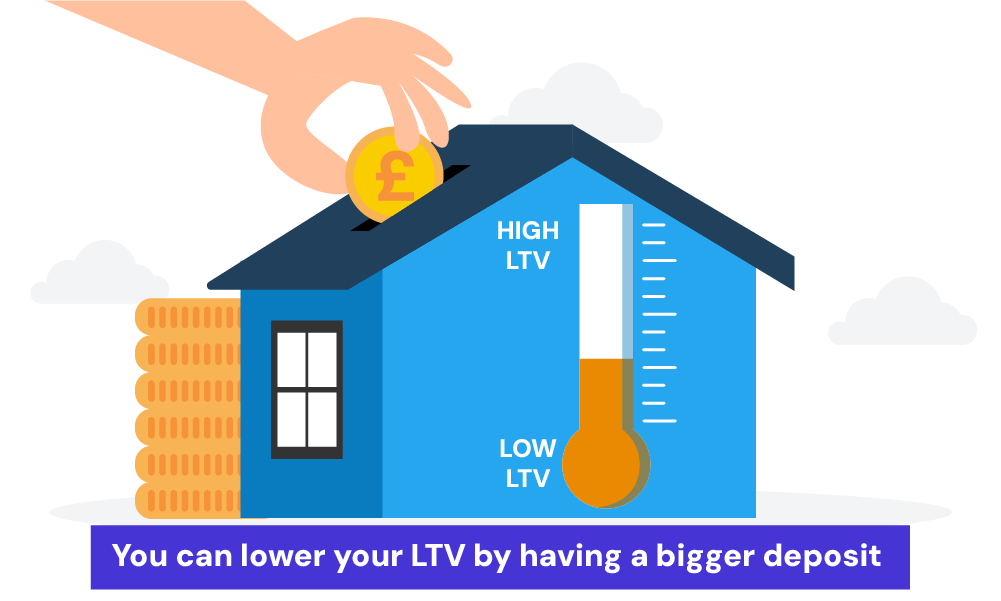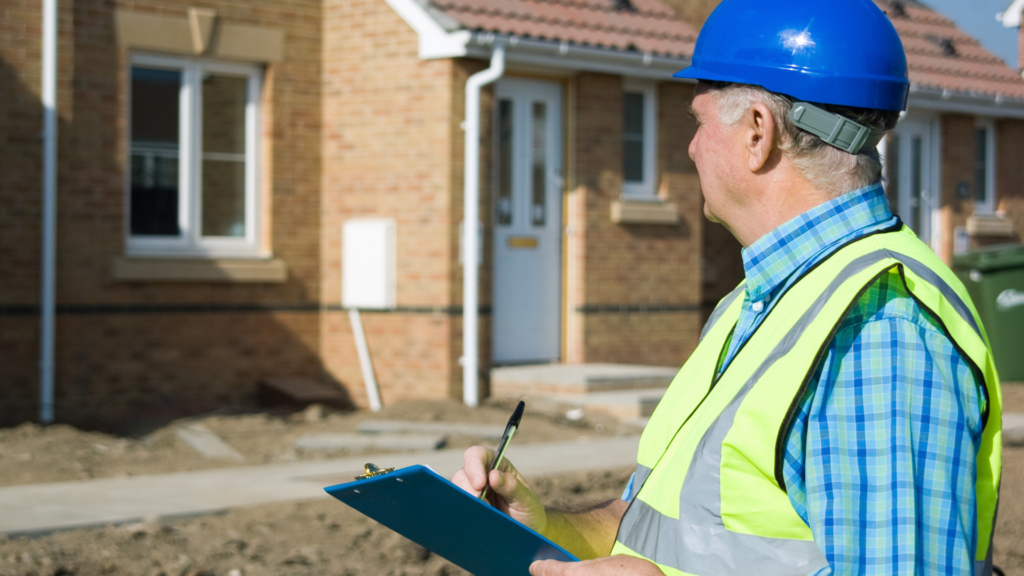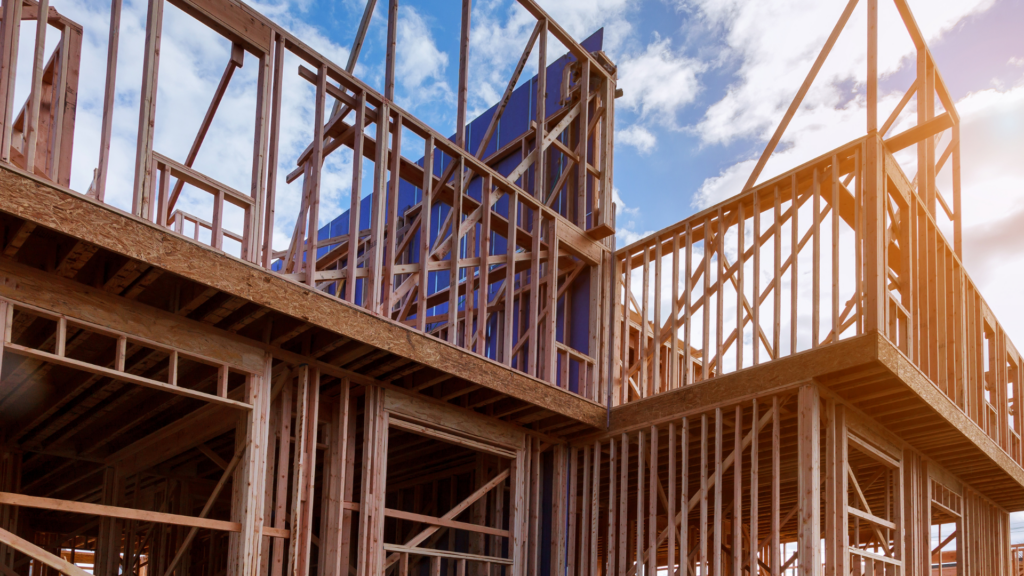- Can You Get a Mortgage for an Apartment?
- What is Different About Getting a Mortgage for an Apartment?
- Types of Flats and Their Mortgage Implications
- Freehold vs Leasehold: What Does It Mean for Your Mortgage?
- What About Getting a Mortgage on Flats with Cladding?
- Types of Mortgages Available for Apartments
- How Much Can You Borrow for an Apartment Mortgage?
- Can You Get a Mortgage for an Entire Apartment Building?
- Key Takeaways
- The Bottom Line
Mortgages for Apartments & Flats: What You Should Know

With around 5.4 million people in the UK living in flats, it’s clear that apartment living is a popular choice for many.
Securing a mortgage for a flat may come with some unique considerations, but it’s a straightforward process with the right guidance.
This guide will break down what you need to know about apartment mortgages, so you can make an informed decision about your next home.
Can You Get a Mortgage for an Apartment?
Yes, you can.
Apartment mortgages are a pretty common thing, and while it may feel like there are more hoops to jump through than getting a mortgage for a traditional house, it’s definitely doable.
The main difference with an apartment mortgage is that lenders often need to be more careful because apartments have so many variations.
Think about it: you’ve got everything from cosy studio flats to those fancy penthouses, and each comes with its own set of potential complications.
Working with a mortgage broker can make the whole process much easier. They know all the details about apartment lending, and they can help you find the best rates, understand deposit requirements, and handle any specific paperwork you might need.
What is Different About Getting a Mortgage for an Apartment?
Getting a mortgage for an apartment isn’t exactly like getting one for a house, mainly because of what an apartment is. Unlike a house, which stands alone, an apartment is part of a larger building.
This means lenders need to know that the entire building is up to scratch—not just your little corner of it.
Depending on what kind of apartment you’re after, you could run into some specifics that might make a lender pause.
New-build apartments, for example, are often priced at a premium and can lose value straight away, which makes lenders a bit wary.
Similarly, studio flats can be tricky—if they’re too small, some lenders might simply say no because they think it’s harder to sell on.
Same goes for apartments above commercial properties like pubs or shops, which could come with extra noise or security issues.
But don’t let this put you off. These are all obstacles that can be overcome, especially with a good broker by your side who knows which lenders are a bit more flexible.
Types of Flats and Their Mortgage Implications
There are loads of different types of apartments out there, and each one comes with its own set of quirks when it comes to getting a mortgage. Let’s break it down so you know what to expect.
Studio Apartments
Studio flats are those tiny, all-in-one spaces where your bedroom, kitchen, and living area all share one room. They’re usually more affordable, which means you might need a smaller deposit.
But be warned, some lenders can be a bit picky if the studio is very small, so mortgage options might be limited.
Purpose-Built Apartments
These flats were built from the get-go to be apartments.
They’re usually straightforward for getting a mortgage, and lenders tend to like them because they meet modern building standards.
Converted Flats
Converted flats are often old houses split into separate units. Depending on how well the conversion was done, some lenders might be a bit cautious, especially if the building’s old.
You might face higher interest rates or need a bigger deposit.
Apartments Above or Within Commercial Buildings
Flats that are above shops, pubs, or restaurants can be a bit tricky. Banks might think they’re risky because of noise, safety worries, or the business downstairs.
This means you might need a bigger deposit. Some mortgage lenders might ask for at least one empty floor between the shop and the flat.
And some may even want a professional to check the flat before they lend you money.
Ex-Council Flats
Former council flats are old public houses that were sold to private owners. They can be a good deal and are often well-made.
But some banks might be a bit worried, especially if most of the building is still owned by the council or if it’s a tall building.
However, if you find the right bank, you could get a great deal.
Basement Apartments
Basement flats are, as the name says, below the street. They can be a bit dark, and lenders might worry about flooding, which could make it harder or more expensive to get a mortgage.
But they’re usually cheaper, so you might need a smaller deposit—that’s the good news!
Maisonettes
Maisonettes are split over two floors, like a little house. They often have their own private door, which is nice.
Mortgage lenders usually think of maisonettes the same way they think of flats. But shared entrances or the condition of the building can sometimes make a difference.
Penthouse Apartments
Penthouse flats are at the top of the building, often with amazing views and a bit of luxury. They can be pricey, which means you’ll probably need a bigger deposit.
Lenders also consider them a bit niche, which might affect the terms.
New-Build Apartments
New flats can sometimes be hard to get a mortgage for. They often lose value after you first buy them, so lenders are a bit careful.
You can still get a mortgage, but you might find that lenders will lend you less money compared to the value of the flat, so you need a bigger deposit, usually around 10-15%.
This can make it less attractive if you want to borrow a lot of money.
Number of Storeys
If the flat is in a high-rise building—say, more than five storeys—lenders can be more cautious.
They worry about maintenance and high service charges, which might mean you need a larger deposit or face higher interest rates.
Freehold vs Leasehold: What Does It Mean for Your Mortgage?
If you’re looking at flats, they’re usually leasehold. This means you own your specific flat, but not the land it’s on.
The land is owned by someone else, like a person, a company, or even all the flat owners together.
A leasehold is usually no problem for lenders, so it’s good news if you want a mortgage. But if you’re looking at a freehold flat, it can be a bit tricky.
Freehold flats are rare, especially in England and Wales, and lenders tend to be cautious about them because it’s not always clear who is responsible for maintaining the building.
Some lenders, like NatWest, will still consider them, but there are fewer options compared to leasehold flats.
With a leasehold, lenders will also take into consideration how many years are left on the lease.
The more years, the better. Anything less, and you could find your options shrinking fast.
What About Getting a Mortgage on Flats with Cladding?
Cladding became a hot topic after the Grenfell tragedy in 2017, and since then, many lenders have been cautious about lending on properties with it.
It’s not impossible, though. You just might need to provide extra paperwork, here’s what you might need:
- EWS1 form to prove that the cladding is safe. Some lenders may also require specific safety ratings, such as A3 or B2.
- Fire Safety Certificate to confirm the building meets fire rules.
- Building Safety Act Compliance to show you’re not liable for cladding repairs.
- Developer’s remediation pledge to confirm the developer will cover cladding repairs.
- A recent valuation report to show the flat’s current market value.
The specific documents required may vary depending on the lender and the building. So it’s wise to check what’s required for your particular situation.
Types of Mortgages Available for Apartments
Just like houses, you’ve got several options for an apartment. Here are the most common types:
- Standard Residential Mortgage – This is your typical mortgage, where you pay off both the interest and the principal.
- Interest-Only Mortgage – With this, you only pay off the interest during the term and pay the principal at the end—meaning your monthly payments are lower but you need a plan for that big end payment.
- Buy-to-Let Mortgage – If you’re buying to rent out, you’ll need one of these. Lenders want to know the rent will cover at least 125-130% of the mortgage payments, and they often require a larger deposit.
Different lenders have different appetites for lending on flats compared to houses.
Sometimes they might offer a lower loan-to-value ratio, meaning you’ll need a bigger deposit. But that’s where shopping around, or getting help from a broker, can really pay off.

How Much Can You Borrow for an Apartment Mortgage?
If you’re wondering how much you can borrow, the answer is… it depends.
Lenders will look at your income, outgoings, and credit score, as well as what kind of apartment you’re buying.
If it’s a high-rise or above a shop, some lenders might reduce the amount they’re willing to lend.
Want a quick way to see what you might be able to borrow? Use our mortgage affordability calculator.
It’s simple to use and gives you a clearer picture of what you can afford before you start your flat search. Try it now to see how much you could borrow.
Can You Get a Mortgage for an Entire Apartment Building?
Now, this is a bit different from getting a mortgage for a single apartment. If you’re thinking of buying a whole building—maybe you fancy yourself as the next big property mogul—that’s called a multi-unit freehold block.
Lenders tend to see this as more of a commercial transaction, so the interest rates are usually higher, and you’ll probably need a bigger deposit.
In most cases, lenders will offer a loan-to-value (LTV) ratio of around 65% to 75%. So, you’ll need to cover at least 25% of the purchase price upfront.
But if you’re in it for the investment, it could be worth it.
Key Takeaways
- Just like with houses, you can get a mortgage for an apartment, though there can be a few extra considerations.
- Leasehold flats are easier to get a mortgage on than freehold flats, which are seen as more complicated.
- Some lenders are cautious about properties with cladding, so extra paperwork might be needed.
The Bottom Line
So, there you have it—mortgages for flats are totally doable, but they do come with a few quirks. The type of flat you’re buying, whether it’s leasehold or freehold, the location, and even things like cladding can all affect your options.
But don’t stress, with a little prep and the help of a good broker, you’ll be on your way.
While you don’t need a mortgage broker, they can make the whole process a lot smoother.
Flats can be a bit more complex than houses, and a good broker knows which lenders are flexible about different types of flats. They can find you the best rates and help you avoid lenders who might say no.
If you want to save yourself time and effort, reach out. We’ll set you up with a qualified mortgage broker for a free, no-obligation consultation to help you find the right mortgage for your flat.
Get Matched With Your Dream Mortgage Advisor...

Frequently asked questions
Can I get a mortgage on a freehold flat?
Yes, but it can be tricky because freehold flats are rare and lenders often prefer the clarity of leasehold flats. Specialist lenders or brokers like NatWest might consider it.
Can I get a 95% mortgage for an apartment?
Potentially, yes. Some lenders do offer 95% mortgages on apartments, but your eligibility will depend on the type of flat and your financial situation.
Can I rent out my apartment without a buy-to-let mortgage?
No, if you rent out your flat without switching to a buy-to-let mortgage, you’d be breaking the terms of your loan—definitely not worth the risk.
Is it harder to get a mortgage for an apartment above a shop?
It can be. Apartments above commercial properties are seen as riskier by some lenders, but others will consider it, it just depends on the specifics of the property and the lender’s criteria.
Is it possible to get a mortgage for a 1 bedroom flat in the UK?
Yes, you can get a mortgage for a 1-bedroom flat. The main things that matter are how much you can afford, your credit history, and the flat itself.
If the flat is big enough and the bank doesn’t think it’s unusual (for example, it’s not too small or above a noisy business), you should be able to get a mortgage.
What is the minimum size for a flat to get a mortgage?
The smallest flat you can usually get a mortgage for is around 30 square metres. Banks are careful about smaller flats because they might be harder to sell later.
But there are some special banks that might consider smaller flats, though there will be fewer options. It’s always best to talk to your mortgage broker to find out what the exact rules are and what your options are.
Can I get a mortgage for a freehold flat?
Yes, but it can be challenging. Freehold flats are rare, and lenders prefer leasehold flats due to clearer maintenance responsibilities.




